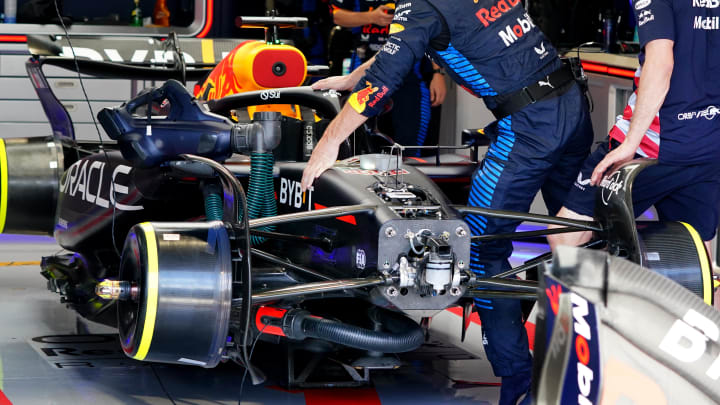FIA Reacts To Questions Surrounding Red Bull And Asymmetric Brake Rule Changes

Concerns emerged in the Formula 1 world following the FIA's modification of technical regulations over the summer break regarding asymmetrical braking systems. This change led to speculation that a team may have employed asymmetrical braking in recent races.
Rumors also saw fingers being pointed at Red Bull's recent drop in performance, which might have stemmed from an action taken by the governing body to stop it from using the braking systems that influenced directional balance.
However, the reality is that a rule was already in place to prevent teams from using asymmetrical braking systems. Article 11.1.2 of F1's Technical Regulations states the following:
"The brake system must be designed so that within each circuit, the forces applied to the brake pads are the same magnitude and act as opposing pairs on a given brake disc."
The governing body added the following sentence to the rule during the recent modification:
"Any system or mechanism which can produce systematically or intentionally, asymmetric braking torques for a given axle is forbidden."
The fact of the matter is that if any team was found to have violated the rules mid-season, the FIA would likely have issued a Technical Directive to all teams, notifying them of the infractions and outlining the necessary corrective actions. Thus, rumors about a team having violated the rule in question can be ignored.
The FIA clarified that the recent rule change was not prompted by any regulatory violations. Instead, it aimed to provide clearer regulations at the request of the teams, setting the foundation for the 2026 season, when Formula 1 will transition to a new era of regulations. However, the 'clarified' rule continues to apply to teams for the 2024 and 2025 seasons.
According to FIA sources who told Motorsport.com, the existing rule was in place to prevent the teams from using 'brake steer' to alter the car's direction during Grands Prix weekends. The rule prohibited teams from using braking systems at the front or rear axles that produce asymmetric braking torques, which brake one wheel more than the other depending on the direction the driver intends to steer in.
In the past, F1 teams have employed brake steer devices featuring an additional brake pedal, which applies braking force to one side of the car. McLaren was found using such a device on its cars in the late nineties, which was a violation of Article 11.1.3 back then.
To prohibit the use of such brake steer devices, the current rule states:
"Any powered device, other than the system referred to in Article 11.6, which is capable of altering the configuration or affecting the performance of any part of the brake system is forbidden."
